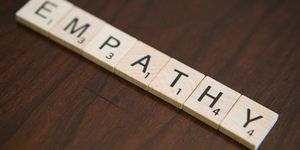Remember Dolly, the world’s first cloned mammal? Nature takes a look back with the scientists who created her in this video. They reveal some fun little details, such as when Karen Walker, an embryologist, had to incubate her cells in her bra so that they would remain at the proper temperature when she shuttled them between laboratories.
July 5 1996 was Dolly’s birth date, and she had been created on February 8, 1996. Both Walker and her colleague Bill Ritchie, also an embryologist, remember the day as a lousy one in the lab. They worked in a small, cramped room and on that particular day, they’d had numerous issues arise with infections and such. While transgenic cows would have been of more value to industry, the scientists were focusing on using sheep because the reproductive biology is well known, they are smaller, and cheaper.
Ritchie and Walker did much of the work that went into creating Dolly. They were working at the Roslin Institute on a project that aimed to create precise genetic alterations in farm animals. The research team leader, embryologist Ian Wilmut, thought that they could make those changes by altering the genome of a cell in culture. The nucleus of that cell, containing the changed DNA would then be transferred to a new cell. The scientists discuss the technical accuracy required for such delicate procedures – even a hangover could cause their hands to shake too much.

Photo from Reuters
Ritchie explains, “The simple way of describing nuclear transfer is that you take an oocyte, an unfertilized egg, and you remove the chromosomes. You then take a complete cell which contains both male and female chromosomes - all of our cells do, apart from the gonads. You take that cell and fuse it to the enucleated egg, activate it - which starts it growing - and transfer it to a surrogate mother. Hopefully, with your fingers crossed, you will get a cloned offspring, a copy of the animal you've taken that cell from.”
Remarks Walker, “Tedious is absolutely the word. You're sitting, looking down a microscope and you've got both hands on the micromanipulators. It's kind of like the joysticks kids use nowadays on games. If your elbow slipped, you could wipe the whole dish out.”
The researchers have some nostalgia about their work, and return to the laboratories where Dolly was made. They also relate the hysteria, and the sheer volume of feedback that came along with the announcement of their discovery.
Ian Wilmut reminds us “Dolly is described as the first mammal cloned from an adult cell. She's actually the first adult clone, period. She's often undersold.”
Source:
Nature









